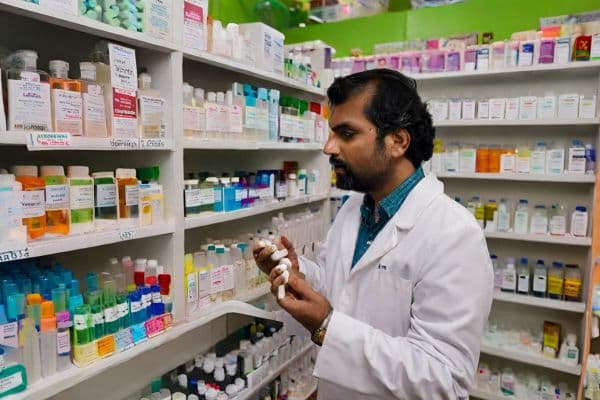Antibiotic Resistance and Misuse in India

Abstract
The antibiotic resistance crisis in India, causing approximately seven lakh annual deaths and projected to reach 10 million by 2050, necessitates urgent intervention. Government directives to regulate antibiotic prescriptions highlight the severity of the issue, exacerbated by widespread misuse and environmental factors. Selling medicines without prescriptions persists, undermining existing regulations. The alarming rise in drug resistance is exacerbated by incomplete patient treatments and physician reliance on uncertain diagnoses. A prescription tool, like Nice HMS, aligns with government directives, emphasizing reasons for drug prescriptions. The scoping report on antimicrobial resistance underscores the urgent need for comprehensive strategies to mitigate the potential public health implications.Introduction:
Approximately seven lakh people die due to antibiotic resistance each year, and by 2050, this number is projected to reach 10 million. The burden of antibiotic resistance surpasses that of road traffic accidents and cancer combined. These alarming figures emphasize the gravity of the problem. In India, antibiotic drug resistance is not only a result of misuse in treatment but also stems from improper waste disposal, agriculture, and poultry farming.
In the context of recent government directives addressing antibiotic use, it is crucial to assess the current landscape of antibiotic prescriptions in India and understand the associated challenges. The Union Health Ministry has issued directives to doctors, particularly those affiliated with medical colleges, urging them to provide reasons for prescribing antibiotics. This response is prompted by the rising concerns over antibiotic usage and the emergence of drug resistance. The government's objective is to establish effective regulation over antibiotic use in the country.
Selling Medicines Without Prescription:
In India, the norm of selling medicines without a doctor's prescription persists. A majority of medicines, including antibiotics, can be obtained without a valid prescription or even with outdated ones. Despite existing regulations, the lack of stringent enforcement allows this practice to prevail. Antibiotics, classified under Schedule H1, are prohibited from over-the-counter sales, yet such occurrences persist due to inadequate regulation. The Union Health Ministry emphasizes that pharmacists should refrain from selling antibiotics without a valid prescription from a registered medical practitioner.
Problem of Resistance:
One alarming consequence of prevalent antibiotic misuse is the surge in drug resistance within India. Contributing factors include both overuse and inadequate patient diagnoses before initiating treatment. Patients often resort to self-medication, introducing the risk of incomplete treatment and subsequent opportunities for drug resistance. Additionally, interference from self-medicated antibiotics complicates the diagnostic process for doctors, hindering accurate assessments. Despite the availability of culture sensitivity tests, many physicians opt for antibiotic prescriptions without complete certainty, further contributing to the challenge of antibiotic resistance.
Addressing Government Directives:
To align with government directives, our prescription tool at Nice HMS facilitates compliance by allowing doctors to include reasons for prescribing drugs in the instruction column. This feature, which can be automated, streamlines the implementation of government guidelines, contributing to a more accountable and regulated antibiotic prescription process.
Drugs and Antimicrobial Resistance:
The scoping report on antimicrobial resistance in India (2017) reveals alarming trends in antibiotic resistance among various bacterial strains. Notably, over 70% of Gram-negative bacteria such as Escherichia coli, Klebsiella pneumoniae, and Acinetobacter baumannii show resistance to fluoroquinolones and third-generation cephalosporins. Resistance to the piperacillin-tazobactam combination is still below 35% for E. coli and Pseudomonas aeruginosa, but 65% of K. pneumoniae exhibit resistance due to multiple resistance genes, including carbapenemases.
Carbapenem resistance in A. baumannii has reached 71%, necessitating the frequent use of colistin as a last resort antimicrobial. Although colistin resistance is generally below 1%, a study reports 4.1% resistance, with a concerning 70% mortality associated with colistin-resistant K. pneumoniae.
Among Gram-positive organisms, 42.6% of Staphylococcus aureus are methicillin-resistant, and 10.5% of Enterococcus faecium are vancomycin-resistant. Salmonella Typhi and Shigella species exhibit high resistance rates (28% and 82%, respectively) to ciprofloxacin, with varying resistance rates for other antibiotics. Vibrio cholerae shows resistance rates to tetracycline ranging from 17% to 75% in different regions of the country.
Conclusion:
The escalating crisis of antibiotic resistance and misuse in India demands urgent attention and concerted efforts. The potential catastrophic consequences highlighted by the projected mortality figures underscore the imperative for comprehensive strategies. Government directives to regulate antibiotic prescriptions are a step in the right direction, emphasizing the need for accountability among healthcare professionals and pharmacists.
However, the multifaceted nature of antibiotic resistance requires a holistic approach. Beyond prescription regulation, addressing the environmental and agricultural contributors to resistance is essential. The alarming trends in resistance among bacterial strains further emphasize the urgency of implementing these strategies.
In conclusion, tackling antibiotic resistance in India necessitates a collaborative effort involving healthcare practitioners, policymakers, and the public. By fostering responsible antibiotic use, stringent regulation, and environmental stewardship, we can hope to mitigate the impending crisis and safeguard the efficacy of antibiotics for future generations.
This Unlock the Future of Healthcare Management! 🚀🏥🌟
Is managing your hospital, clinic, or lab becoming a daunting task? Experience the ease and efficiency of our cutting-edge Management Software through a personalized demo.
